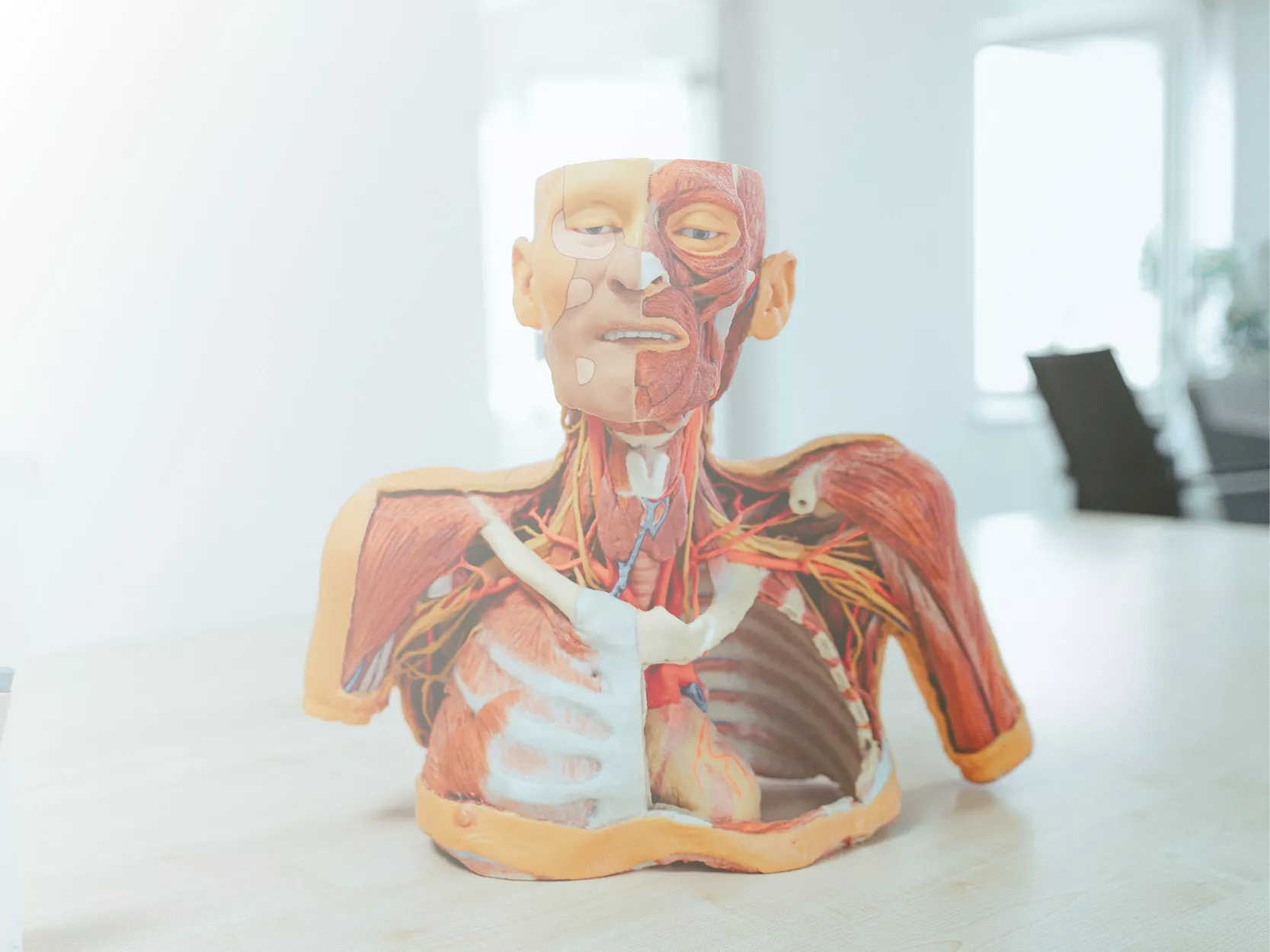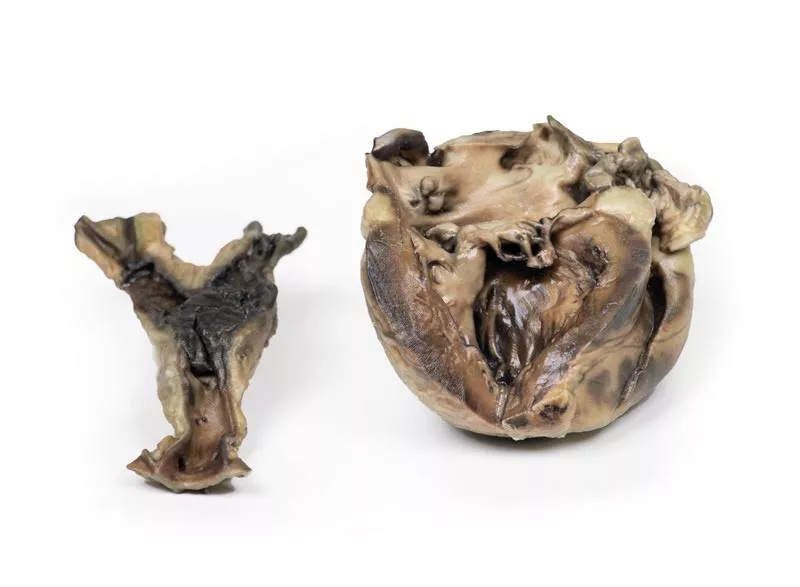Produktinformationen "Calcified Aortic Valvular Stenosis Bicuspid Aortic Valve"
Klinische Vorgeschichte
Für dieses Präparat liegt keine klinische Vorgeschichte vor.
Pathologie
Das Präparat ist ein etwa 1,5 cm dicker horizontaler Schnitt durch die Ebene des linken Vorhofs. Sichtbar sind die glatte Innenfläche des Vorhofs, das linke Herzohr sowie ein Teil der linken Herzkammer. Auf der oberen Seite erkennt man den Truncus pulmonalis mit einem Teil der pulmonalen Trikuspidalklappe sowie die Aorta mit einer abnormen bikuspiden Aortenklappe. An dieser Klappe finden sich verkalkte Verdickungen an den gegenüberliegenden Rändern. Zudem liegt eine Verkalkung an einer Pulmonalklappentasche vor.
Weitere Informationen
Eine bikuspide Aortenklappe ist der häufigste angeborene Herzfehler und bleibt oft bis ins Erwachsenenalter unentdeckt. Sie kann zu Aortenklappenstenose führen, deren Schweregrad variieren kann. Typische Symptome sind Herzgeräusche, Brustschmerzen, Kurzatmigkeit, Palpitationen sowie Anzeichen einer Herzinsuffizienz wie Müdigkeit und Ödeme. Die Verengung zwingt den linken Ventrikel zu erhöhter Arbeit, was zu Wandverdickung, Erweiterung und letztlich zur Herzschwäche führen kann. Eine Verkalkung der Klappentaschen trägt zusätzlich zur Versteifung und Verengung bei.
Für dieses Präparat liegt keine klinische Vorgeschichte vor.
Pathologie
Das Präparat ist ein etwa 1,5 cm dicker horizontaler Schnitt durch die Ebene des linken Vorhofs. Sichtbar sind die glatte Innenfläche des Vorhofs, das linke Herzohr sowie ein Teil der linken Herzkammer. Auf der oberen Seite erkennt man den Truncus pulmonalis mit einem Teil der pulmonalen Trikuspidalklappe sowie die Aorta mit einer abnormen bikuspiden Aortenklappe. An dieser Klappe finden sich verkalkte Verdickungen an den gegenüberliegenden Rändern. Zudem liegt eine Verkalkung an einer Pulmonalklappentasche vor.
Weitere Informationen
Eine bikuspide Aortenklappe ist der häufigste angeborene Herzfehler und bleibt oft bis ins Erwachsenenalter unentdeckt. Sie kann zu Aortenklappenstenose führen, deren Schweregrad variieren kann. Typische Symptome sind Herzgeräusche, Brustschmerzen, Kurzatmigkeit, Palpitationen sowie Anzeichen einer Herzinsuffizienz wie Müdigkeit und Ödeme. Die Verengung zwingt den linken Ventrikel zu erhöhter Arbeit, was zu Wandverdickung, Erweiterung und letztlich zur Herzschwäche führen kann. Eine Verkalkung der Klappentaschen trägt zusätzlich zur Versteifung und Verengung bei.
Erler-Zimmer
Erler-Zimmer GmbH & Co.KG
Hauptstrasse 27
77886 Lauf
Germany
info@erler-zimmer.de
Achtung! Medizinisches Ausbildungsmaterial, kein Spielzeug. Nicht geeignet für Personen unter 14 Jahren.
Attention! Medical training material, not a toy. Not suitable for persons under 14 years of age.






































